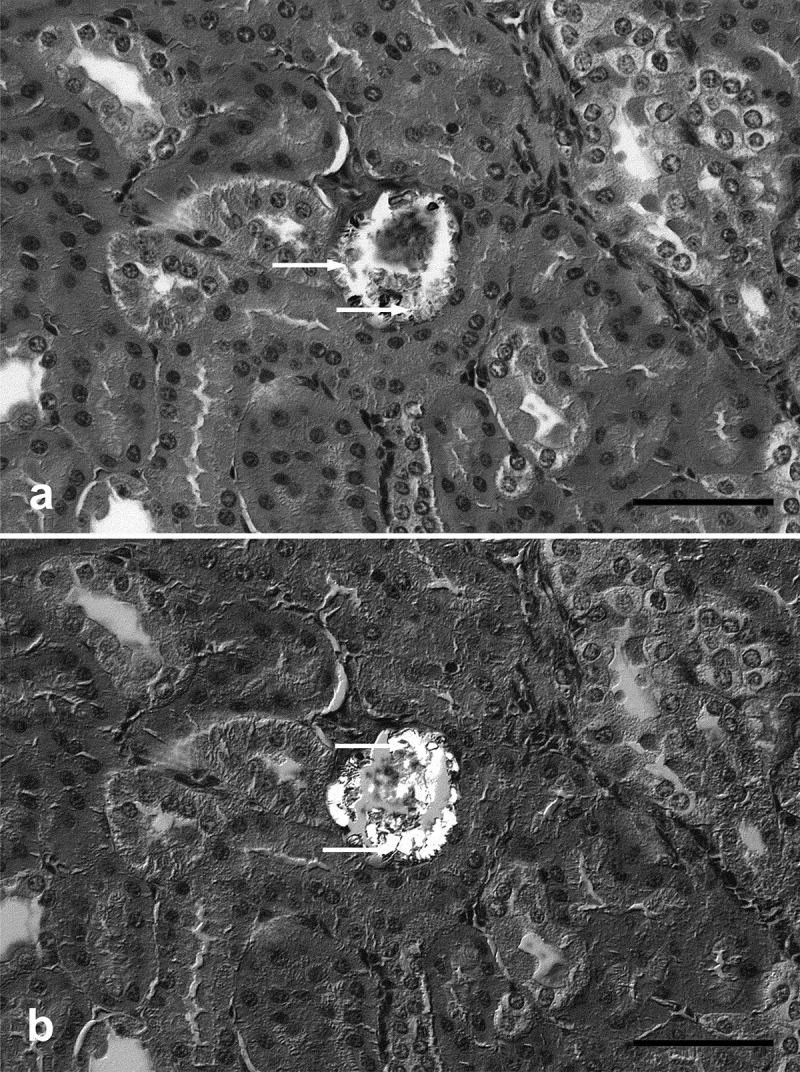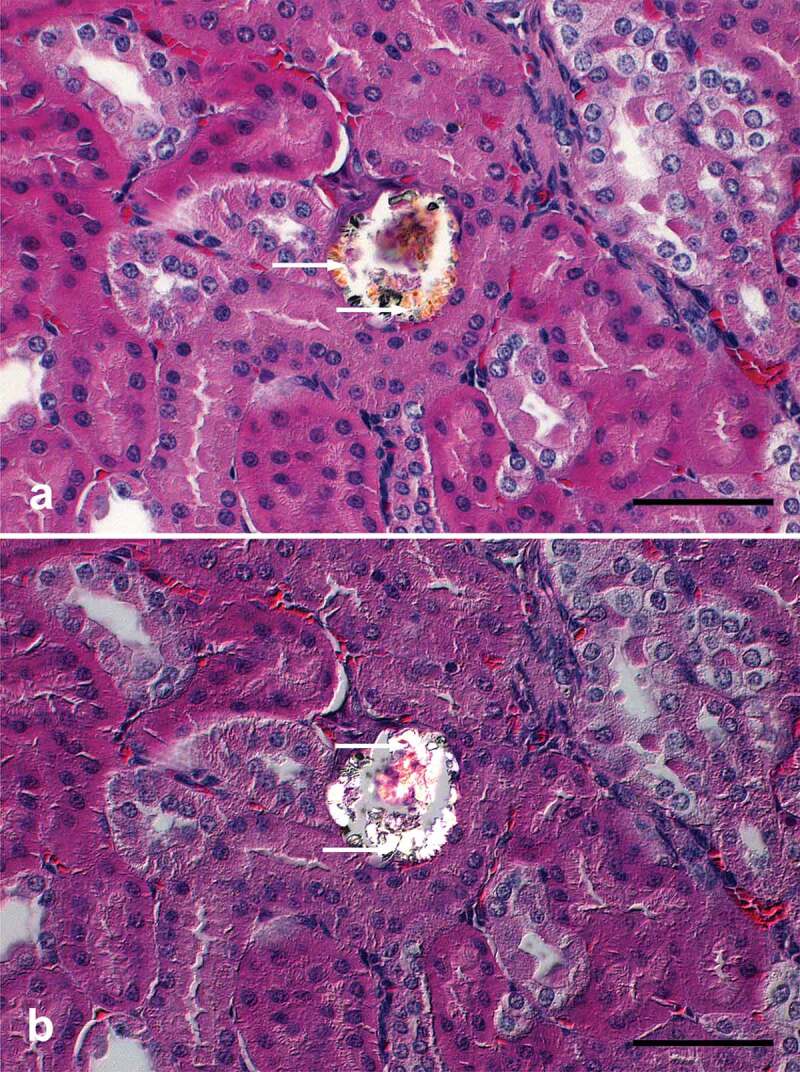A possible case of renal oxalate deposit reported in an African fruit bat (Epomops franqueti).
IF 3.2
Q1 VETERINARY SCIENCES
International Journal of Veterinary Science and Medicine
Pub Date : 2020-08-19
DOI:10.1080/23144599.2020.1807816
引用次数: 1
Abstract
ABSTRACT We report a possible spontaneous case of oxalate nephrosis in an African fruit bat (Epomops franqueti), incidentally observed in Ibadan, South-West Nigeria, in an anatomical and serological survey of the species. Wild caught bats underwent sedation, intracardial perfusion, necropsy and histopathology. All 15 wild-caught African fruit bats were apparently healthy. However, light microscopy revealed mild oligofocal tubulonephrosis with intraluminal deposition of polarizing crystals interpreted as subclinical oxalate nephrosis in one case. In summary, we suggest a dietary aetiology, based on seasonal availability of high ascorbic acid or oxalate containing fruits. However, exposure to anthropogenic contaminants cannot be completely ruled out.


非洲果蝠肾草酸盐沉积一例报道。
我们报告在尼日利亚西南部伊巴丹偶然观察到的非洲果蝠(Epomops franqueti)可能自发的草酸盐肾病病例,在该物种的解剖和血清学调查中。对野生捕获的蝙蝠进行镇静、心内灌注、尸检和组织病理学检查。所有15只野生捕获的非洲果蝠显然都很健康。然而,光镜显示轻度少灶小管肾病伴腔内偏光晶体沉积,一例被解释为亚临床草酸盐肾病。总之,我们建议饮食病因学,基于高抗坏血酸或草酸含量水果的季节性可用性。然而,不能完全排除接触人为污染物的可能性。
本文章由计算机程序翻译,如有差异,请以英文原文为准。
求助全文
约1分钟内获得全文
求助全文
来源期刊

International Journal of Veterinary Science and Medicine
VETERINARY SCIENCES-
CiteScore
4.80
自引率
0.00%
发文量
12
审稿时长
24 weeks
 求助内容:
求助内容: 应助结果提醒方式:
应助结果提醒方式:


